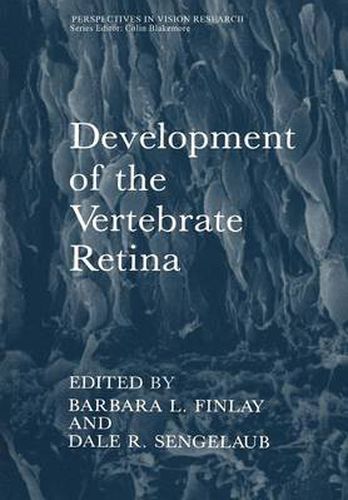Readings Newsletter
Become a Readings Member to make your shopping experience even easier.
Sign in or sign up for free!
You’re not far away from qualifying for FREE standard shipping within Australia
You’ve qualified for FREE standard shipping within Australia
The cart is loading…






This title is printed to order. This book may have been self-published. If so, we cannot guarantee the quality of the content. In the main most books will have gone through the editing process however some may not. We therefore suggest that you be aware of this before ordering this book. If in doubt check either the author or publisher’s details as we are unable to accept any returns unless they are faulty. Please contact us if you have any questions.
The vertebrate retina has a form that is closely and clearly linked to its func tion. Though its fundamental cellular architecture is conserved across verte brates, the retinas of individual species show variations that are also of clear and direct functional utility. Its accessibility, readily identifiable neuronal types, and specialized neuronal connectivity and morphology have made it a model system for researchers interested in the general questions of the genet ic, molecular, and developmental control of cell type and shape. Thus, the questions asked of the retina span virtually every domain of neuroscientific inquiry-molecular, genetic, developmental, behavioral, and evolutionary. Nowhere have the interactions of these levels of analysis been more apparent and borne more fruit than in the last several years of study of the develop ment of the vertebrate retina. Fields of investigation have a natural evolution, rdoving through periods of initial excitement, of framing of questions and controversy, to periods of synthesis and restatement of questions. The study of the development of the vertebrate retina appeared to us to have reached such a point of synthesis. Descriptive questions of how neurons are generated and deployed, and ques tions of mechanism about the factors that control the retinal neuron’s type and distribution and the conformation of its processes have been posed, and in good part answered. Moreover, the integration of cellular accounts of development with genetic, molecular, and whole-eye and behavioral accounts has begun.
$9.00 standard shipping within Australia
FREE standard shipping within Australia for orders over $100.00
Express & International shipping calculated at checkout
This title is printed to order. This book may have been self-published. If so, we cannot guarantee the quality of the content. In the main most books will have gone through the editing process however some may not. We therefore suggest that you be aware of this before ordering this book. If in doubt check either the author or publisher’s details as we are unable to accept any returns unless they are faulty. Please contact us if you have any questions.
The vertebrate retina has a form that is closely and clearly linked to its func tion. Though its fundamental cellular architecture is conserved across verte brates, the retinas of individual species show variations that are also of clear and direct functional utility. Its accessibility, readily identifiable neuronal types, and specialized neuronal connectivity and morphology have made it a model system for researchers interested in the general questions of the genet ic, molecular, and developmental control of cell type and shape. Thus, the questions asked of the retina span virtually every domain of neuroscientific inquiry-molecular, genetic, developmental, behavioral, and evolutionary. Nowhere have the interactions of these levels of analysis been more apparent and borne more fruit than in the last several years of study of the develop ment of the vertebrate retina. Fields of investigation have a natural evolution, rdoving through periods of initial excitement, of framing of questions and controversy, to periods of synthesis and restatement of questions. The study of the development of the vertebrate retina appeared to us to have reached such a point of synthesis. Descriptive questions of how neurons are generated and deployed, and ques tions of mechanism about the factors that control the retinal neuron’s type and distribution and the conformation of its processes have been posed, and in good part answered. Moreover, the integration of cellular accounts of development with genetic, molecular, and whole-eye and behavioral accounts has begun.